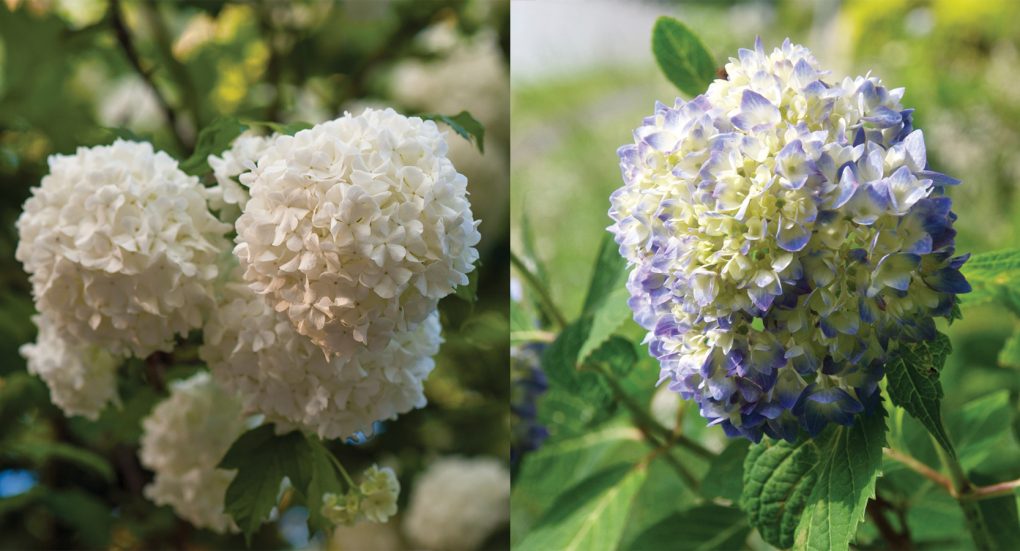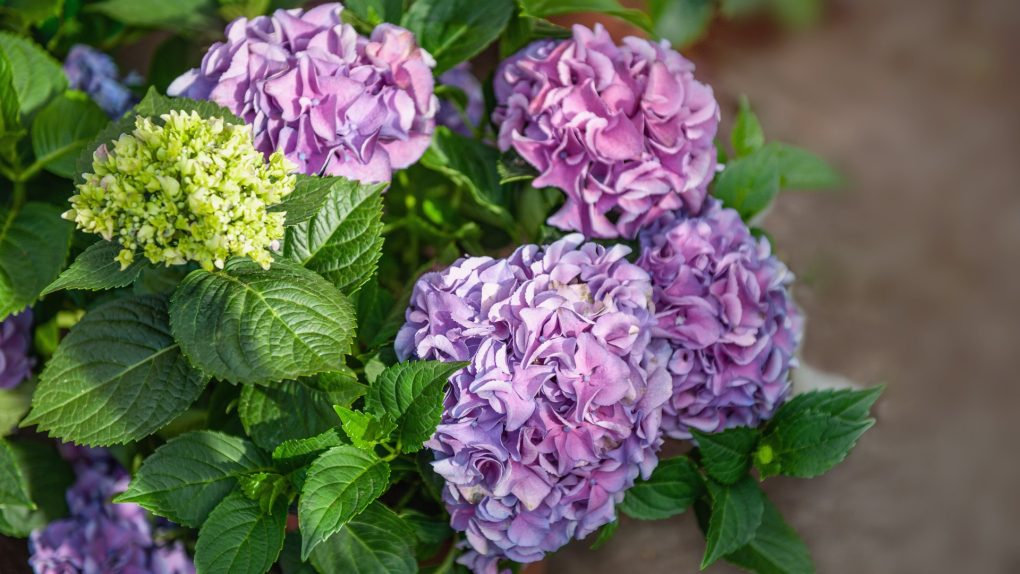Viburnum vs Hydrangea: A Comparison of Popular Garden Shrubs
Viburnum and hydrangea are popular shrubs often used in landscaping and gardening. Both plants have beautiful flowers and are relatively easy to care for, but there are some key differences between the two.

One of the main differences between viburnum and hydrangea is their blooming season. Hydrangeas bloom in the spring and can rebloom in the autumn, while viburnums bloom in the summer. Another difference is the size of their flower heads. Hydrangeas have smaller flower heads that seldom exceed 8 inches in diameter, while viburnum flower heads are typically 8 to 12 inches across.
Despite their differences, both viburnum and hydrangea are versatile plants that can be used in various ways. They prefer light shade and moist but well-drained soil, making them great choices for borders, hedges, privacy rows, woodland margins, and specimen plants. Ultimately, the choice between viburnum and hydrangea will depend on personal preference and the specific needs of the garden or landscape.
Table of Contents
Differences between Viburnum and Hydrangea
When choosing between viburnum and hydrangea, there are several factors to consider. While both plants have their unique features, there are some key differences between the two that may influence your decision. Here are some of the main differences:
Appearance
Viburnums and hydrangeas have similar appearances, but there are some key differences to look out for. Viburnums typically have a more rounded shape with a dense, bushy habit. On the other hand, Hydrangeas tend to have a more open, spreading habit. Additionally, viburnums have glossy, dark green leaves, while hydrangeas have larger, more textured leaves that can be either green or variegated.
Growth Habit
Both viburnums and hydrangeas can grow quite large, but their growth habits differ slightly. Viburnums are more compact and bushy, making them a good choice for smaller gardens or as a low hedge. Hydrangeas, on the other hand, can grow quite tall and wide, making them a good choice for larger gardens or as a specimen plant.
Flowers

One of the biggest differences between viburnums and hydrangeas is their flowers. While both plants produce showy blooms, the flowers of viburnums are typically smaller and more delicate, while hydrangea flowers can be quite large and showy. Additionally, viburnums tend to bloom in early summer, while hydrangeas bloom later in the season.
Foliage
The foliage of viburnums and hydrangeas can also differ. Viburnums have glossy, dark green leaves that can turn shades of red, purple, or yellow in the fall. Hydrangeas, conversely, have larger, more textured leaves that can be either green or variegated. Some hydrangea varieties also have leaves that turn shades of red or purple in the fall.
Similarities between Viburnum and Hydrangea
Although Viburnum and Hydrangea are different plants, they share some similarities. Here are some of the similarities:
Growing Conditions
Viburnum and Hydrangea have similar growing conditions. Both plants prefer well-drained soil that is rich in organic matter. They also require regular watering, especially during dry spells. Both plants also thrive in partial shade, although they can tolerate full sun in cooler climates.
Uses in Landscaping
Viburnum and Hydrangea are popular landscaping plants, often used as hedges, foundation plantings, and specimen plants. Both plants also have attractive flowers that make them a favorite among gardeners. Viburnum and Hydrangea also attract pollinators such as bees and butterflies, making them ideal for wildlife gardens.

Both plants also have different varieties that can be used for specific purposes. For example, some varieties of Viburnum have edible fruit that can be used for making jams and jellies. Some varieties of Hydrangea have large, showy flowers that are popular in cut flower arrangements.
While Viburnum and Hydrangea may have some differences, they share many similarities regarding growing conditions and uses in landscaping. For example, gardeners considering adding these plants to their garden should consider their specific needs and preferences to determine which plant is right for them.
Choosing Between Viburnum and Hydrangea
When choosing between viburnum and hydrangea, there are a few considerations. First, both of these shrubs are beautiful and have similar growing requirements, but there are some differences to be aware of.
Considerations
One important consideration is the time of year when the shrubs bloom. Hydrangeas typically bloom in the spring and may rebloom in the fall, while viburnums bloom in the summer. So, if you want to enjoy blooms throughout the growing season, you may want to consider planting both.
Another consideration is the size of the flower heads. Hydrangeas have smaller flower heads that usually don’t exceed 8 inches in diameter, while viburnum flower heads can be 8 to 12 inches across, depending on the species. If you want larger blooms, viburnum may be the better choice.

The maintenance required for each shrub is also worth considering. While both prefer light shade and moist but well-drained soil, hydrangeas may require more pruning to maintain their shape and promote healthy growth. Viburnums, on the other hand, may require more attention to prevent pests and diseases.
Personal Preference
Ultimately, the choice between viburnum and hydrangea may be personal preference. Some people may prefer the delicate beauty of hydrangeas, while others may prefer the bold blooms of viburnum. So choosing a shrub that you find visually appealing will thrive in your specific growing conditions is important.
Consider the other plants in your garden and how the shrub fits the overall aesthetic. If you’re unsure which one to choose, consider consulting with a local horticulturist or landscaper for guidance.
Whatever you choose, viburnum and hydrangea are excellent choices for adding beauty and interest to your garden.
